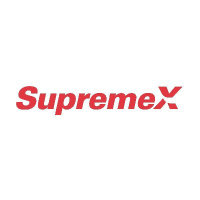
Supremex Inc
TSX:SXP


| US |

|
Johnson & Johnson
NYSE:JNJ
|
Pharmaceuticals
|
| US |

|
Berkshire Hathaway Inc
NYSE:BRK.A
|
Financial Services
|
| US |

|
Bank of America Corp
NYSE:BAC
|
Banking
|
| US |

|
Mastercard Inc
NYSE:MA
|
Technology
|
| US |

|
UnitedHealth Group Inc
NYSE:UNH
|
Health Care
|
| US |

|
Exxon Mobil Corp
NYSE:XOM
|
Energy
|
| US |

|
Pfizer Inc
NYSE:PFE
|
Pharmaceuticals
|
| US |

|
Palantir Technologies Inc
NYSE:PLTR
|
Technology
|
| US |

|
Nike Inc
NYSE:NKE
|
Textiles, Apparel & Luxury Goods
|
| US |

|
Visa Inc
NYSE:V
|
Technology
|
| CN |

|
Alibaba Group Holding Ltd
NYSE:BABA
|
Retail
|
| US |

|
JPMorgan Chase & Co
NYSE:JPM
|
Banking
|
| US |

|
Coca-Cola Co
NYSE:KO
|
Beverages
|
| US |

|
Walmart Inc
NYSE:WMT
|
Retail
|
| US |

|
Verizon Communications Inc
NYSE:VZ
|
Telecommunication
|
| US |

|
Chevron Corp
NYSE:CVX
|
Energy
|
Utilize notes to systematically review your investment decisions. By reflecting on past outcomes, you can discern effective strategies and identify those that underperformed. This continuous feedback loop enables you to adapt and refine your approach, optimizing for future success.
Each note serves as a learning point, offering insights into your decision-making processes. Over time, you'll accumulate a personalized database of knowledge, enhancing your ability to make informed decisions quickly and effectively.
With a comprehensive record of your investment history at your fingertips, you can compare current opportunities against past experiences. This not only bolsters your confidence but also ensures that each decision is grounded in a well-documented rationale.
Do you really want to delete this note?
This action cannot be undone.

| 52 Week Range |
3.52
4.49
|
| Price Target |
|
We'll email you a reminder when the closing price reaches CAD.
Choose the stock you wish to monitor with a price alert.

|
Johnson & Johnson
NYSE:JNJ
|
US |

|
Berkshire Hathaway Inc
NYSE:BRK.A
|
US |

|
Bank of America Corp
NYSE:BAC
|
US |

|
Mastercard Inc
NYSE:MA
|
US |

|
UnitedHealth Group Inc
NYSE:UNH
|
US |

|
Exxon Mobil Corp
NYSE:XOM
|
US |

|
Pfizer Inc
NYSE:PFE
|
US |

|
Palantir Technologies Inc
NYSE:PLTR
|
US |

|
Nike Inc
NYSE:NKE
|
US |

|
Visa Inc
NYSE:V
|
US |

|
Alibaba Group Holding Ltd
NYSE:BABA
|
CN |

|
JPMorgan Chase & Co
NYSE:JPM
|
US |

|
Coca-Cola Co
NYSE:KO
|
US |

|
Walmart Inc
NYSE:WMT
|
US |

|
Verizon Communications Inc
NYSE:VZ
|
US |

|
Chevron Corp
NYSE:CVX
|
US |
This alert will be permanently deleted.
Supremex Inc
Supremex, Inc. engages in the manufacture and sale of envelopes, packaging, and specialty products. The company is headquartered in Lasalle, Quebec. The company went IPO on 2006-03-31. The Company’s products include stock envelopes, custom envelopes, packaging and specialty products. The firm manufactures a range of stock and custom envelopes in an array of styles, shapes and colors, which allows it to offer a high degree of flexibility and customization. The company also manufactures and distributes a diverse range of packaging and specialty products, including corrugated boxes, premium quality folding carton packaging and e-Commerce fulfillment packaging solutions. Other packaging and specialty products include the Conformer Products, polyethylene bags for courier applications, bubble mailers and Enviro-logiX. Supremex operates ten manufacturing facilities across four provinces in Canada and three manufacturing facilities in the United States.

Supremex, Inc. engages in the manufacture and sale of envelopes, packaging, and specialty products. The company is headquartered in Lasalle, Quebec. The company went IPO on 2006-03-31. The Company’s products include stock envelopes, custom envelopes, packaging and specialty products. The firm manufactures a range of stock and custom envelopes in an array of styles, shapes and colors, which allows it to offer a high degree of flexibility and customization. The company also manufactures and distributes a diverse range of packaging and specialty products, including corrugated boxes, premium quality folding carton packaging and e-Commerce fulfillment packaging solutions. Other packaging and specialty products include the Conformer Products, polyethylene bags for courier applications, bubble mailers and Enviro-logiX. Supremex operates ten manufacturing facilities across four provinces in Canada and three manufacturing facilities in the United States.
Revenue: Supremex reported Q3 revenue of $65.7 million, down from $69.4 million last year, mainly due to declines in the envelope and packaging segments.
Profitability: Adjusted EBITDA fell to $6.2 million (9.4% margin) from $7.9 million (11.4% margin) a year ago, but improved from the previous quarter.
Special Dividend & Debt Reduction: The company completed a $53 million sale-leaseback, paid a $0.50 per share special dividend, and reduced net debt to $8.9 million.
Segment Performance: Folding carton and e-commerce packaging saw double-digit growth, but this was offset by a sharp decline in commercial printing revenue.
Acquisitions: Supremex acquired Enveloppe Laurentide and Trans-Graphique, integrating both quickly and expecting meaningful synergies.
Outlook: Management emphasized a strong balance sheet, ongoing cost and operational optimization, and a continued focus on tuck-in acquisitions and shareholder returns.



































